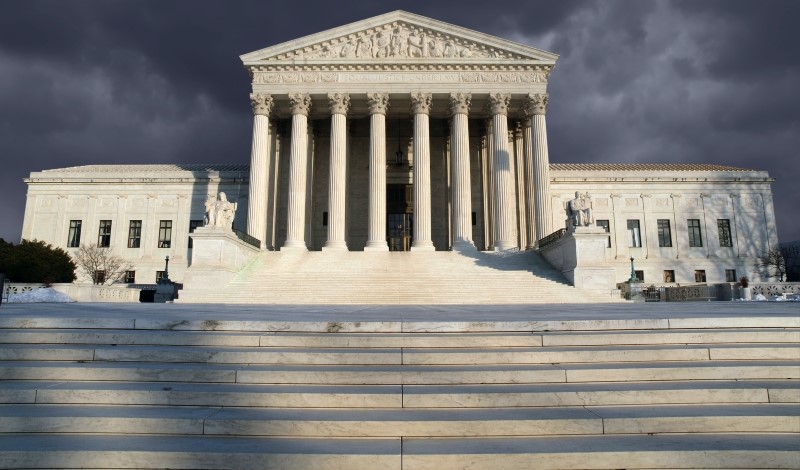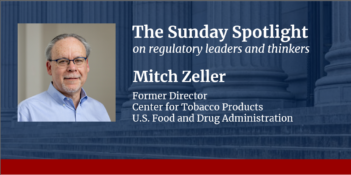
A dispute over fishery regulation could deliver a blow to a key doctrine calling for deference to administrative agencies.
Could a rule regulating herring wash away the Chevron doctrine?
Last month, the Supreme Court agreed to hear an appeal on Loper Bright Enterprises v. Raimondo, which addresses a National Oceanic and Atmospheric Administration (NOAA) rule requiring Atlantic herring vessels to carry federal monitors on board to collect fishery management data. Specifically, the petitioners object to NOAA interpreting the law to compel vessels to pay federal monitors from the vessel’s own revenue streams.
The Court will limit its consideration of Loper to one issue with broad regulatory consequences: whether to overturn the Court’s 1984 decision establishing the Chevron doctrine.
In Chevron v. NRDC, the Court clarified how courts should interpret ambiguous statutory provisions. If a provision’s statutory language is clear and unambiguous, a court must follow the plain meaning of a statute. In these cases, courts must adhere to the intent of Congress as expressed in the statute and cannot defer to agency interpretation.
But if the statute is silent, ambiguous, or unclear, the Chevron Court held that a court must defer to agency’s interpretation of the statute, as long as that interpretation is reasonable. Indeed, a court must uphold the agency’s decision, even if the court disagrees with it.
The Chevron doctrine, in other words, solidifies agency deference. It is significant because it equips federal agencies with a legal tool to defend their views in court, further defining the balance of power between the federal judiciary and executive branch.
In recent years, the doctrine has been subject to contentious debate, with members of Congress, academics, federal judges, and even Supreme Court justices split on Chevron’s legitimacy.
On one side, Chevron’s supporters argue that agencies possess the technical understanding to decide policy matters in their areas of expertise.
For instance, according to Craig Green, a professor at Temple University Beasley School of Law, overruling Chevron would cost the legal system dearly, with hundreds of precedents requiring reanalysis without agency input. When combined with the ensuing scramble to revise administrative structures, this lack of agency deference could diminish “the quality and morale of the government,” Green explains.
Chevron’s proponents also appeal to the concept of democratic accountability. They contend that elected presidents choose agency heads, making agencies—unlike federal judges—answerable to the public.
On the other hand, critics of the Chevron doctrine suggest that such expansive deference gives agencies too much power.
For example, Paul Clement, a former U.S. Solicitor General representing the challengers to the doctrine, argues that Chevron deference has corroded the American system of checks and balances and has “directly contributed to an unaccountable executive branch, overbearing bureaucracy, and runaway regulation.”
In a similar vein, Justice Clarence Thomas wrote in 2020 that “Chevron is in serious tension with the Constitution, the APA, and 100 years of judicial decisions” by constraining judicial power.
From a practical standpoint, overturning Chevron would be “one of the most destabilizing decisions that this court has issued,” argues James Goodwin, a senior policy analyst at the Center for Progressive Reform. Over 19,000 judicial opinions cite Chevron, making it one of the most important decisions in federal judicial history. Especially after the Court’s momentous decision to overturn Roe v. Wade, disposing of Chevron would solidify the justices’ willingness to reverse longstanding legal precedent.
The future of Chevron deference also holds considerable political weight. Throughout Chevron’s history, Democrats and Republicans alike have employed the doctrine to defend environmental, labor, and other administrative rules. More often than not, courts have upheld agency interpretations, regardless of the party in power.
In the last six years, however, agencies lost 70 percent of Supreme Court cases addressing Chevron. Instead, the Court has applied a more rigid approach to statutory interpretation, giving agencies less leeway.
Last year’s decision in West Virginia v. EPA, for example, cemented the “major questions doctrine”—which states that federal agencies do not have the authority to decide significant policy issues without explicit authorization from Congress. Conservatives praised the ruling as a win for representative government, while liberals decried the decision as a partisan power grab.
Ultimately, the Court’s decision in Loper has the power to shape the legislative agenda . Often, lawmakers draft broad guidelines and delegate the technical details to agencies to avoid gridlock. As a result, constraining or eliminating agency deference could make it more difficult for Congress to pass legislation.
Undoing Chevron could also threaten the Biden Administration’s climate agenda. Although Democrats have passed major clean energy laws, Congress has been unable to agree on the proper allocation of power to the Environmental Protection Agency for regulating climate change. With President Biden’s environmental and energy policies facing resistance already, eliminating Chevron “would make the prospects of surviving judicial review all the more daunting,” Goodwin argues.
Oral arguments in the Loper case will likely be heard before the Court this fall or winter, with a decision handed down by June 2024.



